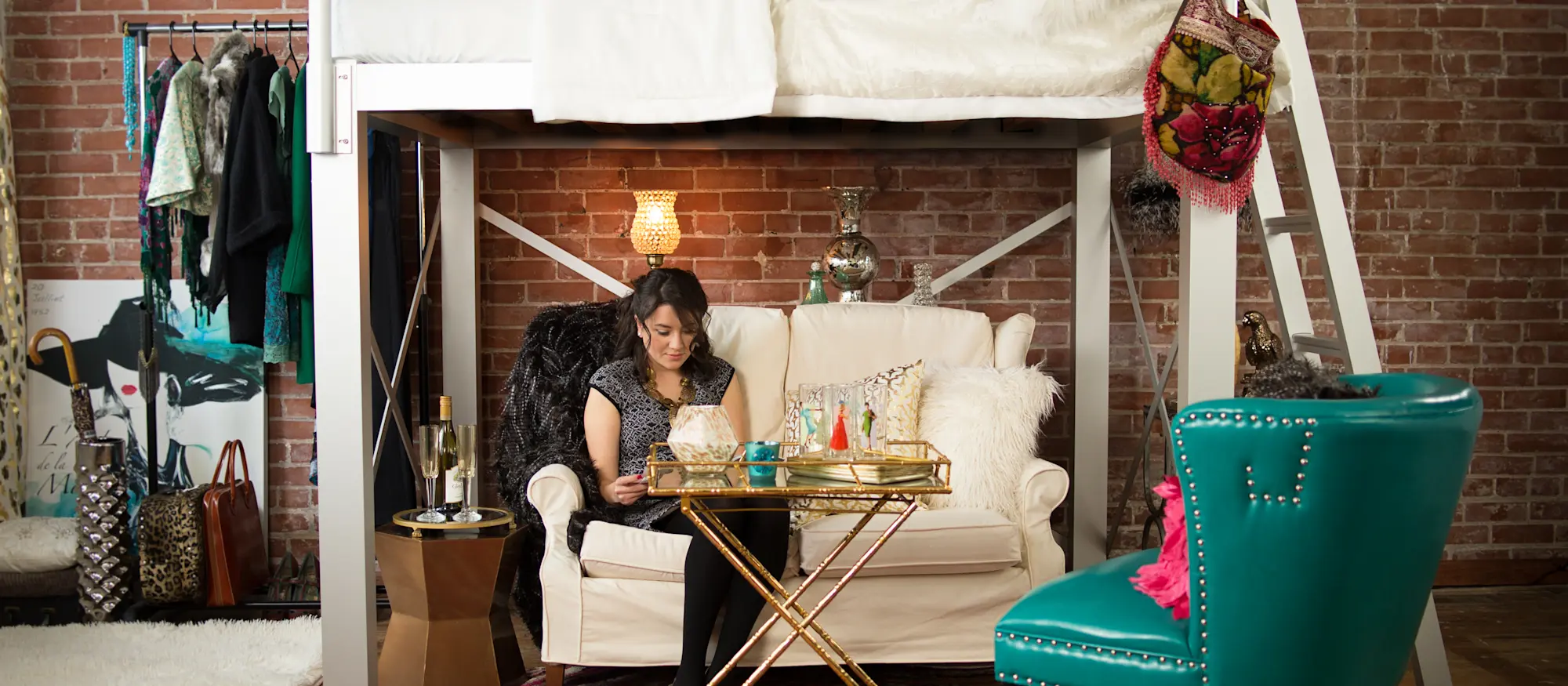
Studio apartments were once reserved for new college graduates on a budget or young couples just starting out. But if the tiny house trend has taught us anything it’s that, for many people, living in a small space doesn’t necessarily have to mean sacrificing a big lifestyle. In fact, many people find the opposite to be true: that their small space actually frees up their time and their budget to enjoy life more…a discovery that’s given smaller dwellings like studio apartments wider appeal than ever before.
If you’re considering downsizing into a studio (or you simply happen to be a new college graduate on a budget) your only lingering concern may be the obvious one: making everything you need fit into what essentially boils down to a single room.
So what is the key to living life to the fullest in a tiny home? It’s strategic design that makes the most of every inch of space you’ve got. Here are seven ways to maximize efficiency and functionality in a studio apartment.
Use Multipurpose Furniture
There’s a quote about home design that says “Have nothing in your home that you do not know to be useful or believe to be beautiful.” For small space dwellers, we’d add “in at least two ways” to that first part. In a small space you (literally) don’t have room for furniture that only serves a single purpose, so you should set your sights on multi-taskers. Whether it’s a coffee table that’s also a storage trunk, a dining bench that hides your shoes inside, or a TV stand that’s also your dresser for clothes, think of at least two ways to use a piece of furniture before your buy it.
Think Up
Take a cue from centuries of urban planning and make the most of a tight space by building up. The easiest way to do this is to purchase a loft bed, which will free up valuable space on the floor. Think about it: A queen-sized bed is roughly 5 feet wide by 7 feet long, and takes up about 35 square feet of floor space. That’s a good portion of your living area when your home is only 300 or 400 square feet. A lofted bed adds major function to the space below: you can bring in a desk and turn it into a workspace, designate the space as bike storage or a spot for hanging clothes storage, or use the extra room to purchase a sofa that can actually fit more than one person.
Incorporate Easy Organization
Clutter can be a two-fold problem in a studio. For one, it can accumulate quicker in a small space since you likely won’t have an excess of closets or spare rooms to store it in. And also, clutter is a fast way to make a small space look even tinier.
The first step is, of course, to purge anything you don’t really need. (The standard litmus test applies here: if you haven’t worn or used something in the last year, get rid of it).
The next step is to make it easy to organize the things you do consider essential by creating built-in systems that will keep your apartment tidy. A few ideal solutions include:
- Storage furniture: We mentioned this one already but it’s worth repeating. Having closed storage around your apartment that also happens to serve as your furniture is one of the easiest and most efficient ways to hide clutter.
- Built-in wardrobes: If you own your apartment, consider hiring a contractor or closet company to install a built-in wardrobe with door that conceal its contents. (If you’re a renter, a freestanding or modular unit will work nearly as well). You can stash everything from books, to towels, to dishes, to out-of-season clothes inside, while sacrificing minimal floor space.
- Cabinet organizers: For something that’s designed for the sole purpose of organization, standard cabinetry can still be inefficient for studio apartment residents. Maximize wasted shelf space or make the far reaching corners of deep base cabinets accessible by retrofitting cabinetry with organizers and sliding shelving, which can be purchased at many big box stores.
Choose a Light (and Tight) Color Palette
When it comes to choosing a color palette for your studio apartment, remember one thing: the lighter, the better. Color has a big effect on how we perceive space. Dark walls and furniture can make a room feel closed off and small, while light colors do the opposite. Shades of white, pale wood tones, and breezy fabrics will give you small home a larger feel.
At the same time, stick to a tight palette that includes no more that three shades. Interior designers often use this as a guideline for designing rooms because it gives the space a unified and deliberate feel (i.e. the opposite of cluttered and messy). Because a studio is, in effect, a single room, it’s a good guideline for your home, too.
Add in a Statement Piece (or Two)
If you think that having a restrained color palette means there’s no room for statement pieces in a studio, think again (whew). Small spaces can actually be better candidates for bold design moves because there are fewer competing elements in the room. The key to getting your “wow moment” right is to limit it to one or two elements, not a whole slew of them. Good candidates include a bold pattern on the drapery, a single large scale art piece, or an intricate ceiling light fixture.
